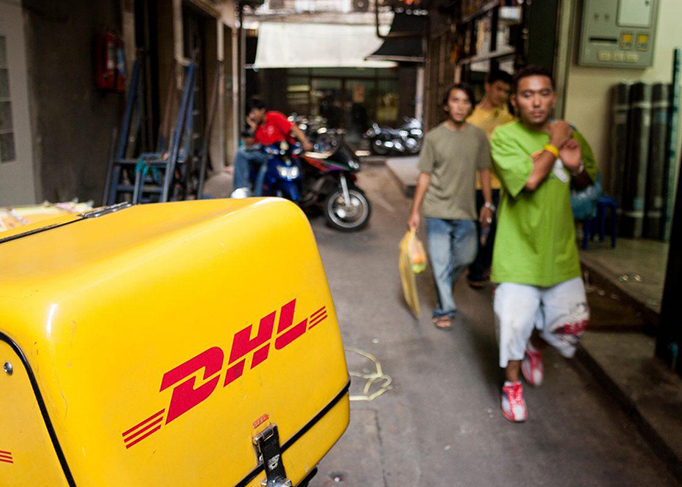Just last week, DHL launched a new service to allow the unbanked in Southeast Asia to buy online through its Cross Border Cash-on-Delivery (COD) service. This follows other new-age players like Grab/Go-Jek aggressively launching initiatives of their own to provide financial services to people who don’t have banking accounts.
Banking services are synonymous with convenience. In modern society, making transfers, paying bills and making loans have all been enabled by banks and they have continued to innovate as we increasingly embraced technology. Many regional banks in Southeast Asia have created mobile applications, a solution seemingly tailor-made to the young population who access the mobile internet more than anybody else in the world.
However, banking penetration remains low in the region, with only 47% of the population in Southeast Asia having a bank account despite these new initiatives. This gap is highlighted particularly in the Philippines, where a staggering 77% of the population is unbanked, according to a recent survey by the Bangko Sentral ng Pilipinas. A similar magnitude of people are afflicted with the same problem in Vietnam and Indonesia at rates of 65% and 52% respectively. With this in mind, how can the unbanked be better served in the region?
Online platforms have to be augmented with offline network
“The supply of the banks can’t accommodate the burgeoning number of users. It’s the equivalent of being in Union Square in downtown San Francisco. The people in Mountain View and Oakland would find it difficult to get there,” said Hendra Kwik, CEO of Payfazz, an Indonesia-based mobile platform for financial services, in reference to the banking ecosystem in Indonesia. As most Indonesians store their money as cash, a tech-only approach to banking the population does not suffice. A physical presence is required to digitize the cash for consumers, and Payfazz hopes to provide a solution with its army of offline agents.
While technology makes life much easier for the masses, sometimes the masses are required to make technology work, and companies have to tailor their products to each individual market. For lesser developed areas of Southeast Asia, establishing a strong offline network is key.
Unconventional data is the new-age credit scoring
Consumers are not the only ones suffering from a lack of financial services, with only 33% of SMEs in Southeast Asia having access to loans and a line of credit. This prevents them from executing their growth plans effectively and limits their ability to scale quickly when demand surges. “There are 78 million small businesses in Southeast Asia, that’s three times more than the U.S.,” said Andrea Baronchelli, CEO of Aspire, a Singapore based company offering direct loans to SMEs.
SMEs often fail to get loans from banks due to their lack of credit history and assets for use as collateral. To counter the lack of credit history or collateral these SMEs face, Aspire’s proprietary risk assessment engine taps onto non-conventional data, such as business transactions, data from online accounting software, online ratings, and social activities to create a new-age credit scoring for SMEs.
In this era of social media, there are huge amounts of data freely available online. Customer feedback, ratings, and the traction of a company’s social media account can be used to determine the health of a business. Companies that have perfected the method of tapping this data will have a key competitive edge moving forward.
The need for speed to win over consumers
For the few companies who are fortunate to have their loans approved by banks, the approval often comes after extensive research and credit verification, which typically takes many weeks. SMEs often lack sufficient cashflow to deal with surges in demand and thus need capital quickly. New methods of credit verification and increased processing speed are therefore key in revolutionizing the traditional SME financing method and to help these businesses reach their full potential.
Patrick Lynch, the CEO of First Circle, a Philippines-based startup providing PO financing and invoice financing to SMEs, said, “A typical bank loan takes multiple in-person visits and months to process. First Circle uses a combination of trading history and network data to understand what each SME does and how they interact with their trading partners, cutting down the entire loan process to just 3 days.”
Embracing data analytics through their own proprietary software has allowed First Circle to safely underwrite tens of thousands of invoices for large SMEs as well as those with no credit history in a short amount of time.
Companies must innovate to stay agile, such as automation via data analytics. Additionally, the usage of collaborative cloud platforms and the flattening of decision-making processes will be key to maintaining a competitive edge.
In summary, innovation and adaptability is key
Southeast Asia internet economy is expected to grow exponentially over the next few years, with both customers and businesses starting to demand new frictionless and faster access to financial services. Adapting quickly to the ever-changing needs of consumers is a competitive advantage for startups. As Charles Darwin said, “It is not the strongest or the most intelligent who will survive but those who can best manage change”.
Disclosure: Insignia Ventures Partners is an investor in Aspire, First Circle and Payfazz.This article was developed with the assistance of Ang Teng Jen and Jonathan Lim.
This article was written by Tan Yinglan from Forbes on 2 October 2018 and was legally licensed through the NewsCred publisher network. Please direct all licensing questions to legal@newscred.com








